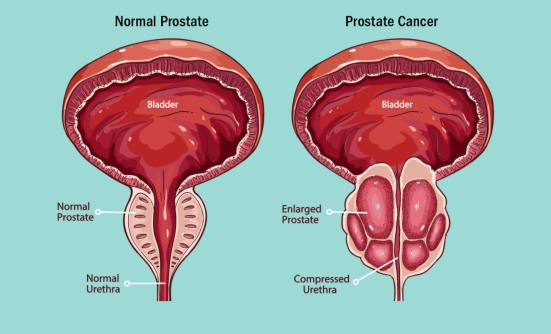The treatment of patients with chronic lymphocytic leukemia (CLL) has changed dramatically in the past few years with the introduction of drugs that target the B-cell antigen receptor pathway. Imbruvica (ibrutinib), a first-generation Bruton tyrosine kinase (or BTK), was initially approved by the FDA in 2014 for the treatment of CLL, and in 2016 was approved as a first-line treatment for CLL.
In November 2019, the FDA approved the second BTK, Calquence (acalabrutinib), for first-line treatment of patients with CLL or for those with relapsed (coming back) or refractory (not responding to therapy) CLL. A third BTK was approved in 2020.
Calquence is a second-generation, and more selective, BTK inhibitor than Imbruvica; it is designed to limit the side effects that were seen with Imbruvica, such as bleeding and atrial fibrillation.

Now, long-term data presented at the 2020 annual meeting of the American Society of Clinical Oncology (ASCO) demonstrated the ability of Calquence to sustain long-term responses in patients with CLL who have not received previous therapy, and limited side effects.
The lead study investigator, John C. Byrd, M.D., D. Warren Brown Chair of Leukemia Research, Ohio State University Comprehensive Cancer Center, Columbus, presented the results at the ASCO meeting, suggesting that these data support the use of Calquence as the first treatment for patients with CLL.
Long-Term Responses
These long-term results come from a phase 2 clinical trial of patients with CLL who have not received previous therapy for their disease. The results showed that almost all patients (97% of them) had a response to treatment with Calquence.
Even more important, the responses were durable, and almost 2.5 years after starting therapy with Calquence, 86% of the patients are still receiving this therapy, indicating that their cancer is still responding to treatment, with no significant side effects. The treatment was also well tolerated, with no long-term safety issues.
“Acalabrutinib monotherapy produced a very high and durable response, regardless of high-risk genomic characteristics seen in previously untreated CLL,” Dr. Byrd said. “The toxicity associated with acalabrutinib was generally mild, with only a small subset of patients discontinuing therapy due to adverse events.”
The inhibition of BTK has previously resulted in improved clinical outcomes in patients with newly diagnosed CLL and in relapsed or refractory disease.
First-Line Treatment
This is the first phase 2 clinical trial of Calquence in patients who have not received previous therapy for CLL. The expansion part of this study enrolled 99 patients who received Calquence as their first treatment, and they continued to receive it until their disease progressed or until they had unacceptable side effects.
Initially, the patients received either a dose of 100 mg twice daily or 200 mg once daily. Later in the study, when it was identified that twice-daily dosing was probably better than once daily, all patients were switched to the dosage of 100 mg twice daily.
The goals of the study were to evaluate patients’ tolerability of the medication and lack of adverse events, as well as to assess the response as seen by the study investigators, the time it took patients to respond to treatment, the duration of the response, and event-free survival.
The patients’ average age was 64, and nearly half of them had stage III or stage IV CLL (advanced disease). In addition, 10% of the patients had deletion 17p, a rare genomic abnormality, and almost 66% had CLL without IgVH gene mutation, a mutation that affects the response to treatment in patients with CLL.
Significantly, the results of the study showed that 97% of the patients had a response to therapy, including 7% of patients who had complete responses (no sign of cancer) and 90% of patients who had partial responses. Notably, the average time to having a response to treatment was 3.7 months. After an average of 53 months, 86% of the patients still received Calquence therapy, indicating that their disease was responding to treatment.
“Median duration of response and event-free survival median response have not yet been reached with extended follow-up, and the estimated 48-month duration of response is 97%,” Dr. Byrd explained.
Side Effects
The most common side effects of any grade were diarrhea, headache, upper respiratory tract infection, fatigue, and bruising. Most of these adverse events were grade 1 or 2, said Dr. Byrd. He added that the side effects with Calquence generally went away over time with the continuation of therapy.
Serious side effects were reported in 38% of the patients; pneumonia and sepsis were the only 2 side effects reported in 2 or more patients. In addition, 2 patients died during the study, 1 from multi-organ dysfunction related to pneumonia and the other from heart failure, but these side effects were not related to treatment with Calquence.
Overall, 14 patients discontinued treatment with Calquence because of side effects. Of these 14 patients, 6 patients ended treatment because of side effects and 3 patients stopped because their disease progressed, meaning their CLL no longer responded to treatment. Dr. Byrd said that among the 6 patients who discontinued treatment because of side effects, 4 had secondary cancers and 2 had infections.
According to Dr. Byrd, Calquence was not associated with hypertension or bleeding, which have been seen with other BTK inhibitors.
“High-grade hematologic adverse events were very uncommon, and no patients discontinued acalabrutinib due to hypertension, bleeding events, or atrial fibrillation,” Dr. Byrd noted.









